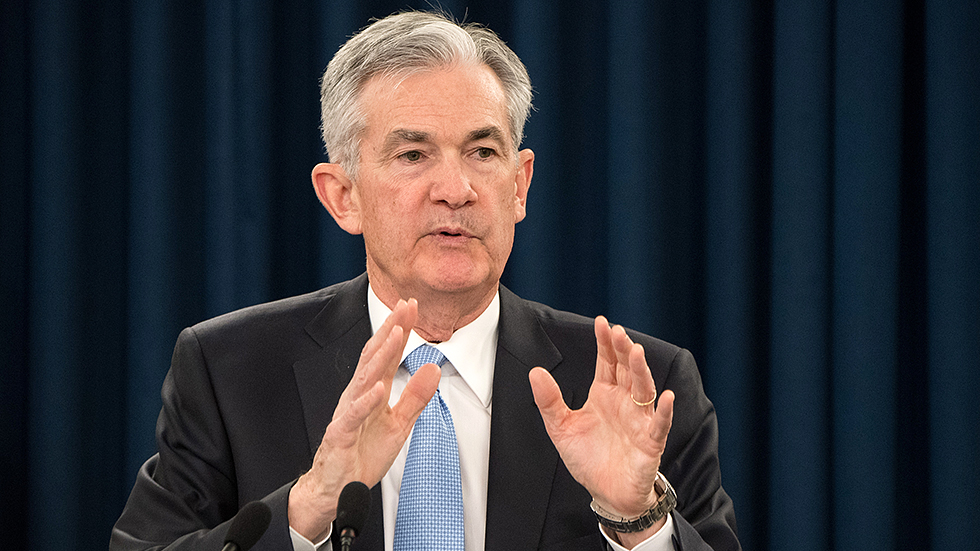
The Federal Reserve and its chairman, Jerome Powell, are under growing pressure from President Trump and Wall Street to slash interest rates.
While the U.S. economy continues to grow and enjoy low unemployment, Trump’s escalating trade battles and recent signs of slowness in key economic data have left investors anxious. And Trump is ratcheting up the pressure on his hand-picked chairman, seeking the Fed’s help as he attempts to end a trade war with China — and clinch another presidential term in 2020.
Powell and top Fed officials hinted toward lowering rates earlier this month, and Trump may soon get his wish. The Fed will forecast its plans on Wednesday at the end of a two-day meeting of its policymakers. And while the Fed is not likely to cut rates this month, it is expected to project at least one future cut.
But that is unlikely to calm Fed watchers. Powell will be walking a tightrope with Trump and the markets eagerly anticipating the timing of a rate cut and how aggressive that cut will be.
The question of how to move interest rates is just one of several challenges facing the Fed as it faces intense political pressure and an uncertain economic forecast.
“The Fed has to wrestle with not only all of the uncertainty that’s in the market because of the trade battles but an unprecedented amount of political risk,” said Karen Shaw Petrou, managing partner at Federal Financial Analytics.
Wednesday’s minutes from the Fed meeting will also provide crucial hints on how the bank views the risk from Trump’s trade wars and other economic warning signs.
The Fed would not want a potential rate cut to “be seen as a concession to the president and a bailout for the market,” Petrou added. “That’s not a comfortable place for the central bank to be.”
Trump is looming over any decision. The president has hit Powell with unprecedented public pressure for close to a year as the central bank attempted to stretch out the recovery from the 2008 recession while preparing for the next downturn.
While the central bank is independent of the White House, the Fed has operated under Trump’s shadow since Powell was confirmed as chairman in February 2018, defying and enraging the president along the way.
In an interview with ABC News aired Friday, Trump bashed the Fed again and argued he has “waited long enough” for the bank to cut interest rates.”
“I disagree with him entirely,” Trump said of Powell, claiming that the economy and the stock market would have grown faster “if we had a different person in the Federal Reserve that wouldn’t have raised interest rates so much.”
Despite Trump’s warning to keep rates steady, the Fed has raised rates to prevent rampant inflation seven times throughout his presidency, including four times under Powell.
But the Fed pulled back after a winter market selloff that rattled Wall Street and an economic slump, ruling out rate hikes for the foreseeable future.
Inflation has also remained persistently below the Fed’s target range of 2 percent measured by the personal consumption expenditures index minus food and energy prices.
The Fed’s handling of inflation has brought on criticism.
“They pretty egregiously misunderstood the inflationary pressures they perceived last year,” said Daniel Alpert, managing partner of investment firm Westwood Capital. “That leaves us with a level of inflation that is really dismally low and does not justify the hikes of 2018.”
Fed officials are now expressing concerns about low inflation and have suggested they may soon take action after months of touting patience.
Powell said in a speech earlier this month that the Fed “will act as appropriate to sustain the expansion,” which Wall Street saw as a hint toward a future rate cut.
Trump’s threat to impose tariffs on $300 billion more in Chinese goods is also adding to the complicated economic picture the central bank must navigate.
Trump’s tariffs threaten to spike prices on hundreds of essential household products, while Beijing’s retaliatory measures could mean severe pain for the ailing agricultural sector. Tariffs on Chinese goods and the associated costs could severely slow the U.S. economy, according to economists, and potentially trigger a recession.
But Tim Duy, an economics professor at the University of Oregon, in a Monday research note, pointed out that May upswings in consumer spending and manufacturing “suggest the economy is nowhere near teetering into a recession and will give ammunition to the wait-and-see crowd,” he added.
Duy said that he still expects the Fed “to open the door for a July rate cut” after the economy only added 76,000 jobs in May while inflation remained low.
“They still need more data to justify a rate cut,” Duy wrote. “Another jobs report along the lines of the May report would go a long way toward supporting that cut in July.”
Holding off on the timing of a rate cut will likely only intensify the pressure on Powell.
Publicly, Powell has dismissed the president’s criticism and vowed that the central bank will remain independent.
At a Fed policy conference earlier this month, Powell tried to reassure markets that the bank is “closely monitoring” the fallout from Trump’s tariffs.
The Fed also faces concerns that lowering interest rates now could prevent the bank from responding effectively to the next slowdown or crisis. With a baseline rate of 2.25 to 2.5 percent, the Fed has little room to cut if the economy needs stimulation through cheaper money.
“They don’t have a lot of tools in the kit,” Petrou said, highlighting how the Fed was in a challenging spot.
“It’s in the middle of trying to figure out how to do better, and at the same time facing political attack.”
























